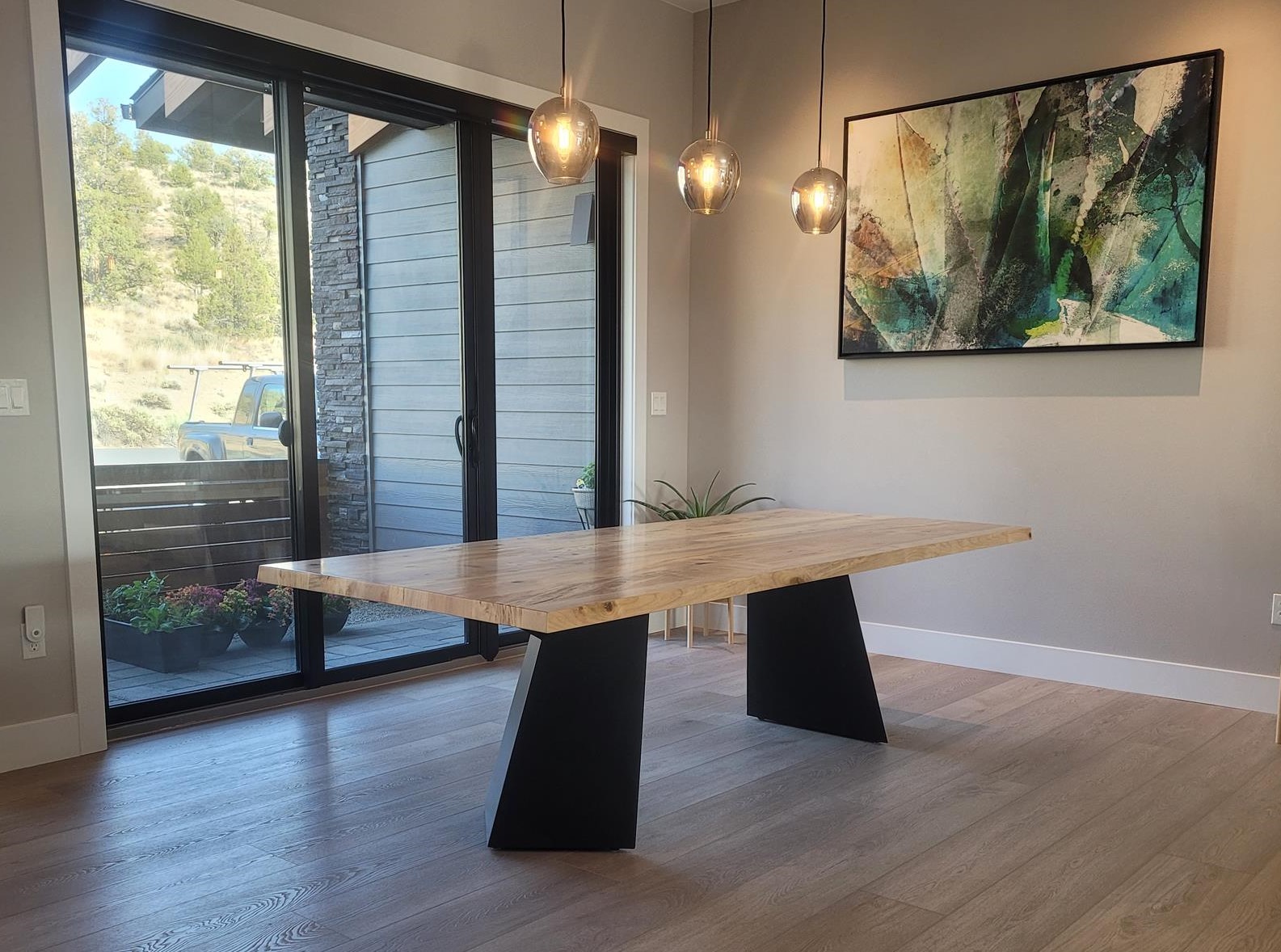The Ultimate Guide to Selecting Resilient Dining Room Table Legs
The Ultimate Guide to Selecting Resilient Dining Room Table Legs
Blog Article
A Comprehensive Consider Dining Table Leg Styles: Finding the Suitable Suit
Choosing the appropriate eating table leg design is essential for both aesthetic charm and sensible performance. For those with bigger tables, trestle legs ensure tough assistance, whereas hairpin legs introduce a mid-century modern vibe with their minimal layout. The x-shaped legs mix contemporary style with enhanced stability.
Traditional Four Legs
Among the various kinds of table leg styles, the conventional four-leg style continues to be a timeless choice for numerous families. This timeless configuration uses an unified mix of capability and aesthetic appeals, making it a seasonal fave. 4 legs supply well balanced assistance, making certain the table continues to be stable and capable of bearing substantial weight. This is particularly advantageous for homes that frequently host large gatherings or utilize their dining table for multiple objectives, such as job or crafting.
From an aesthetic viewpoint, the typical four-leg layout can be easily adjusted to numerous interior styles. Whether crafted from timber, metal, or a combination of products, these legs can be delicately carved, sleek and minimalistic, or anything in between. Their convenience permits them to match both rustic and contemporary setups effortlessly.
Furthermore, the straightforward framework of the four-leg style facilitates convenience of motion and placement within an area. Unlike more facility bases, this style minimizes blockages, offering ample legroom for restaurants. In summary, the typical four-leg table leg design marries sustaining sophistication with practical capability, making it an astute selection for those seeking both kind and function in their eating furniture.
Stand Base
Commonly commemorated for its elegant and space-efficient style, the stand base is a notable alternative to the conventional four-leg arrangement in eating table leg designs. Without edge legs, diners are afforded higher flexibility of activity, making it an ideal choice for round and oval tables that promote even more intimate and comprehensive gatherings.
The central column itself offers a canvas for detailed designs and creative expressions, including a component of aesthetic interest beneath the table. In summary, the pedestal base combines capability with style, making it a refined and useful option for diverse dining environments.
Trestle Legs
Trestle legs offer a durable and ageless foundation for dining tables, characterized by their horizontal cross-bracing and sturdy support beams. Stemming from middle ages times, this layout has actually progressed yet maintained its crucial structure, making it a seasonal favorite in both typical and contemporary setups. The central trestle light beam, usually supported by 2 or more upright posts, uses extraordinary security, permitting for larger table sizes without the need for extra legs.
A significant benefit of trestle leg tables is the sufficient legroom they supply. Unlike tables with four corner legs, the lack of obstructions at the table's edges gives unobstructed room for chairs and diners, improving convenience and accessibility. This makes trestle tables suitable for accommodating bigger gatherings, whether in a dining space or a reception hall.
From rustic farmhouse to smooth contemporary styles, trestle legs can be tailored to match specific preferences. Their long-lasting allure and useful advantages make trestle legs a compelling choice for those seeking both style and practicality in their dining table.
Hairpin Legs

The appeal of hairpin legs exists in their simplicity and adaptability - dining room table legs. Available in a variety of products, consisting of steel and brass, they can be finished in many shades to complement different indoor designs. Whether coupled with a rustic wood table top or link a contemporary glass surface, hairpin legs easily mix functionality with a touch of vintage appeal
Durability is one more significant attribute of hairpin legs. Despite their delicate appearance, these legs are crafted to birth significant weight, ensuring the table stays steady and safe. In addition, they are reasonably easy to install, making them a popular option for DIY lovers and expert furnishings manufacturers alike.
X-Shaped Legs

Constructed from materials such as steel, timber, or a combination of both, X-shaped legs can be tailored to match numerous design preferences. Steel legs often provide a streamlined and industrial feel, perfect for loft-style apartments and contemporary eating spaces. On the other hand, wood X-shaped legs supply a warmer, much more rustic charm, ideal for farmhouse or eclectic interiors. The adaptability in products allows property owners to tailor their eating tables to better fit their general style system.
In addition, the engineering behind X-shaped legs look these up ensures even weight distribution, lessening the threat of tottering and boosting durability. This makes them particularly appropriate for larger dining tables that need additional assistance. Fundamentally, X-shaped legs mix functional design with modern-day aesthetic appeals, making them an ageless option for diverse dining environments.
Conclusion
An extensive understanding of table leg styles discloses the distinctive features and advantages of each style. Standard four legs provide stability and classic allure, while stand bases supply legroom and a streamlined appearance. Trestle legs ensure durable assistance for larger tables, and use this link hairpin legs present a mid-century modern-day visual. X-shaped legs integrate contemporary layout with improved stability. Selecting the ideal leg design guarantees both functional and visual contentment in any type of dining room.
Report this page